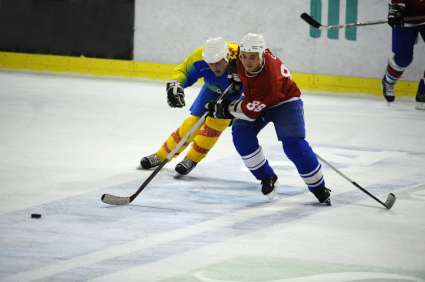In an effort to promote safer play and minimize the risk of head, neck and spine injuries, the National Federation of State High School Associations (NFHS) has clarified the rules on checking from behind in high school hockey.
Rule 6-7-1 will now make pushing, charging, cross-checking or
body-checking an opponent from behind in open ice a minor and misconduct
penalty; Rule 6-7-2 will make hitting from behind into the boards or
goal frame a flagrant violation resulting in a game misconduct. 
The rules now clearly define what will be considered checking from behind and what it means to be flagrant.
The changes are an effort to change the culture in high school hockey, which has become increasingly violent, and come in the wake of several highly publicized catastrophic injuries suffered by players after being illegally checked from behind, most notably Minnesota high school junior, Jack Jablonski.
"Because of the attention being given to dangerous play, the committee really took a hard look at the severity of injuries caused by these hits," said Dan Schuster, NFHS staff liaison to the Ice Hockey Rules Committee, who, as Ice Hockey Rules Editor, is responsible for interpreting hockey rules.
"The reason behind the rule is more about addressing a change of culture in high school hockey, and players, coaches, officials and fans need to understand the consequences of these hits, says Schuster. "Everyone at a hockey game has a role: coaches coach, players play, officials officate and fans support their team and the game of hockey. Coaches, players and fans alike need to understand that when an official calls a penalty, especially a check from behind infraction, the official is attempting to minimize the risk for the players. Players, coaches and fans must understand that illegal acts will and should be penalized. Understanding one's role can help make the game safer for student-athletes."
Some are skeptical that the rule clarification will do much good. Hal Tearse, Coach-in-Chief of Minnesota Hockey, for one, believes that the simplest solution - better enforcement of existing rules - is probably the best. "It seems that we continue to add new rules and interpretations of existing rules and then increase the penalties. Yes, the game has gotten more physical and outside the boundaries of the rule book. Why? Because the on-ice officials refuse to call the penalties. So we make new penalties and rules. Same story, same result."
Other rule changes
The checking-from-behind change was one of five rules revisions approved by the rules committee at its April 23-24, 2012 meeting in Indianapolis. The changes were subsequently approved by the NFHS Board of Directors.
Two of the rules changes will affect the goal crease.
- First, the high school goal crease will now have a different look, matching the crease used by both the National Hockey League and National Collegiate Athletic Association.
- Second, Rule 6-23-4 will now provide that, "no attacking player shall stand on the goal-crease line or in the goal crease if, in the opinion of the official, the player physically prevents the goalkeeper from defending the goal." According to Schuster, this rule is meant to eliminate unnecessary whistles that stop play when a player is in the crease but has no effect on the goalkeeper. "As long as a player isn't physically disrupting or visually impeding the goalkeeper, he or she can stand in the crease," he said.
Additional rules changes were:
- Rule 5-2-3: Officials will now be required to wear a half face shield on their helmets, effective in the 2013-14 season. All other official uniform requirements remain the same.
- Rule 3-3-4: If a team challenges the opposing goalkeeper's equipment, the official should not stop play to measure but should report the challenge to the state association. This rule was amended to limit stoppages of play.
According to the NFHS High School Athletics Participation Survey, ice hockey is the 14th-most popular boys sport at the high school level with 36,912 participants in 1,612 schools. An additional 9,022 girls participated in the sport at 578 schools.
Source: NFHS
Posted May 14, 2012








